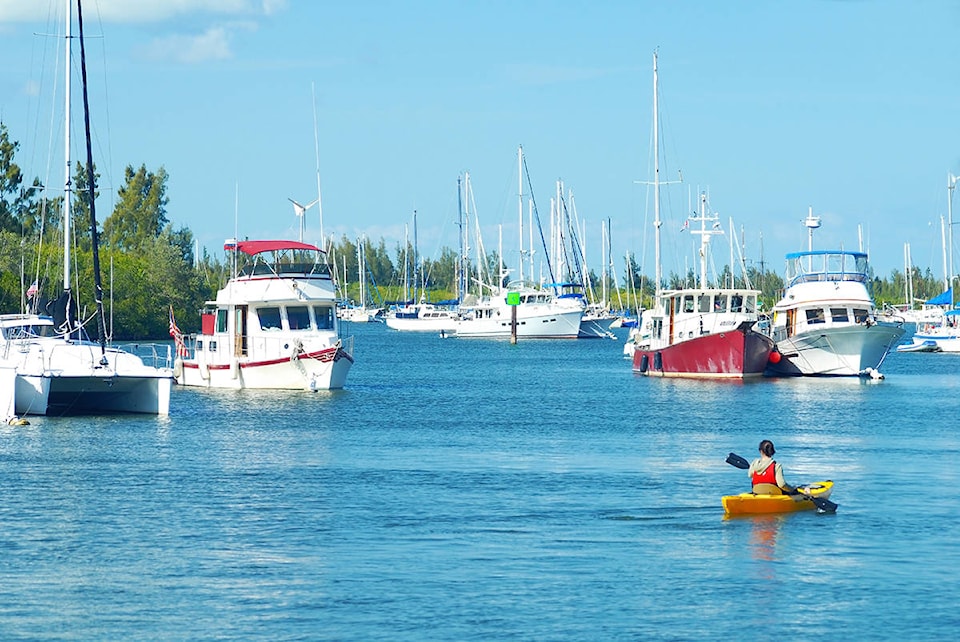Imagine this scenario: you are paddling a bright yellow kayak across the Comox Harbour. A powerboat is approaching directly ahead. You are low and slow and they are high and fast. Directly behind you, a sailboat is gaining on your position. Who is going to run over you first?
The ocean is mostly flat and always wet. Despite creative attempts to install traffic lights, stop signs, overpasses, and solid lines, we have failed. Nothing stays put. If this wasn’t trouble enough, boats don’t brake and stop. They slow, slip, and slide. And what rule of law is it, when all around you are empty nautical miles to the horizon and beyond, that brings a tugboat towing a log boom the size of Prince Edward Island directly across your course?
All marine traffic laws are primarily grounded in one common-sense goal: collision avoidance. Nobody wants to run over the yellow kayak. But who turns or blinks first? Boaters should know that Canadian federal regulations clearly define who is the “stand on” vessel (stay-the-course) and who is the “give way” vessel (get-out-of-the-way). The rules relate to each vessel’s size, manoeuverability, power and draft restrictions.
Simply put, which boat is able to change course easier, faster, safer?
A working tug can take more than two kilometers to change or stop course. Government websites detail collision regulations, and locally, the Cape Lazo Power and Sail Squadron teaches navigation as part of its course curriculum for the Pleasure Craft Operator Card, a proof of competency required by anyone operating a boat with a motor in Canadian waters.
Back to our kayaker caught in the middle. The powerboat should yield to the right (starboard) and the sailboat should also yield starboard. Both vessels should make their course correction early and obvious, slowing with wake consideration. The kayak should maintain a steady course, not suddenly turn in front of either boat.
Of course, what should happen isn’t what always happens. In any situation, all boaters are legally required to take whatever action necessary to avoid a collision. There’s a wise saying among experienced mariners: keep right, give right, big is right, nobody is right.
For more information, check out these links:
Canadian Safe Boating Course, Nautical Rules of the Road:
bit.ly/3li2BnG
Government of Canada, Collision Regulations:
bit.ly/318KnFc
To contact the Cape Lazo Power and Sail Squadron, email capelazoeducation@gmail.com
